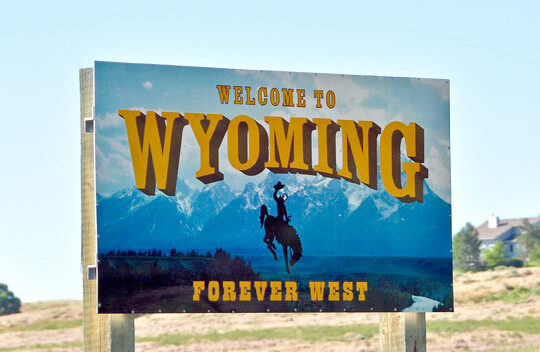32 of the current 50 states used to be territories of the United States as Puerto Rico currently is. Each one of those states had to fight for statehood, and it was touch and go for a lot of them. Every single one became a state and is now more prosperous and safer than in its territory days. We expect to see the same thing for Puerto Rico. In honor of National Women’s History Month, we will share with you the story of how women’s voting rights almost scuttled Wyoming’s chances of becoming a state.
No consensus
Current discussions about statehood for Puerto Rico often focus on the fact that there is not complete, 100% agreement on whether or not Puerto Rico should become a state. Some members of Congress have proposed that Congress should require a 2/3 majority for any new state to be admitted. But Wyoming was admitted as a state with a vote in the House of 139-127. That’s 52.26 percent.
Why did those against Wyoming’s admission want to vote against it? We’ll get to that shortly. First, we have to admit that Wyoming did not have consensus on a lot of issues. At the time of its admission, its government was made up of statehood supporters. But the constitutional convention in Wyoming was very lively, with arguments over many different issues:
- Should people who were not citizens of the United States be allowed to work there?
- Should private armies be allowed?
- Should women be allowed to work in coal mines, as they did in Pennsylvania?
- Where should the state capital be?
- How would corporate power be controlled (even though the only corporation in Wyoming at the time was the Union-Pacific railroad)?
- Should the state own all the water in the state?
- Women could vote — but would they have to be able to read first?
In the end, after lots of fiery debate, Wyoming put together a “cut and paste” constitution with parts of other states’ constitutions and the decisions they had settled on for all those contentious questions.
Why did Congress hesitate?
The first obstacle to statehood for Wyoming was its small population. 60,000 was the customary requirement for statehood, and Wyoming didn’t have that many people living there, even if all the railroad workers were counted. Like several other territories, they claimed that they did and Congress accepted their claim. Wyoming still has the smallest population of any of the states.
But the main reason Congress had a hard time admitting Wyoming seems to have been that is was a Republican territory. It still is largely a Republican state. In the late 1800s when Wyoming was trying to gain statehood, the Democrats in Congress were fighting against admitting another Republican state. With this barrier to admission, Congress ignored Wyoming’s requests repeatedly. The territory finally went ahead and held a constitutional convention without having an enabling act from Congress. They got through their extensive debates without dividing up along party lines and most of the items they included in their constitution were accepted with bipartisan support.
People currently in Congress are not shy about saying they don’t want to admit Puerto Rico because they fear (unreasonably) that it may be a Democratic state. Mitch McConnell and others have boldly stated that this is why they won’t support statehood for Puerto Rico. In 1890 when Wyoming became a state, however, Congress recognized that this was a silly or at least an undignified reason. They looked for something more likely to get popular support.
Women’s rights
Wyoming allowed women to vote. Women didn’t get the federal right to vote until 1920, but women in Wyoming Territory got the vote. Members of Congress seized on this point to support their arguments against statehood for Wyoming. In the same year as Wyoming’s admission, the National American Woman Suffrage Association, led by Elizabeth Cady Stanton, began a state-by-state campaign for women’s voting rights.
In spite of this hot topic, the House did manage to pass Wyoming’s admission. The debate on the subject in the House of Representatives was a lively as the Wyoming constitutional convention had been.
“The territorial is a preparatory or probationary condition, out of which the people should at the earliest moment emerge into statehood,” one Member said. “Wyoming and Idaho have endured this condition of vassalage [through] a long probation.”
He went on to say that he would be ashamed to hear anyone say that Wyoming should not be allowed admission as a state just because they let women vote. In fact, he must have been ashamed that day because several members stated that the founding fathers of the United States never imagined that women would be allowed to vote and that God had not planned on it either. Voting, one member said, would make women “rough and tough.”
There were also vigorous arguments about the constitutional convention being called before there was an enabling act, about the lack of agreement among Wyoming voters, and about the size of the population. Even so, the House passed the admission bill for Wyoming.
It took the Senate three more months to get around to passing it. Wyoming became the 44th state, however.
Lessons for Puerto Rico
Wyoming shows that a territory can become a state without gaining complete agreement on controversial topics first. In fact, most of the states could provide evidence of this fact. We keep hearing that Puerto Rico or the Congress or both must manage complete consensus before action can be taken. “That,” as Governor Pierluisi has said, “is not how democracy works.”
When it comes to women’s voting rights, Wyoming turned out to be on the right side of history. Ask your representatives to be on the right side of history when it comes to equal rights for the people of Puerto Rico.








No responses yet